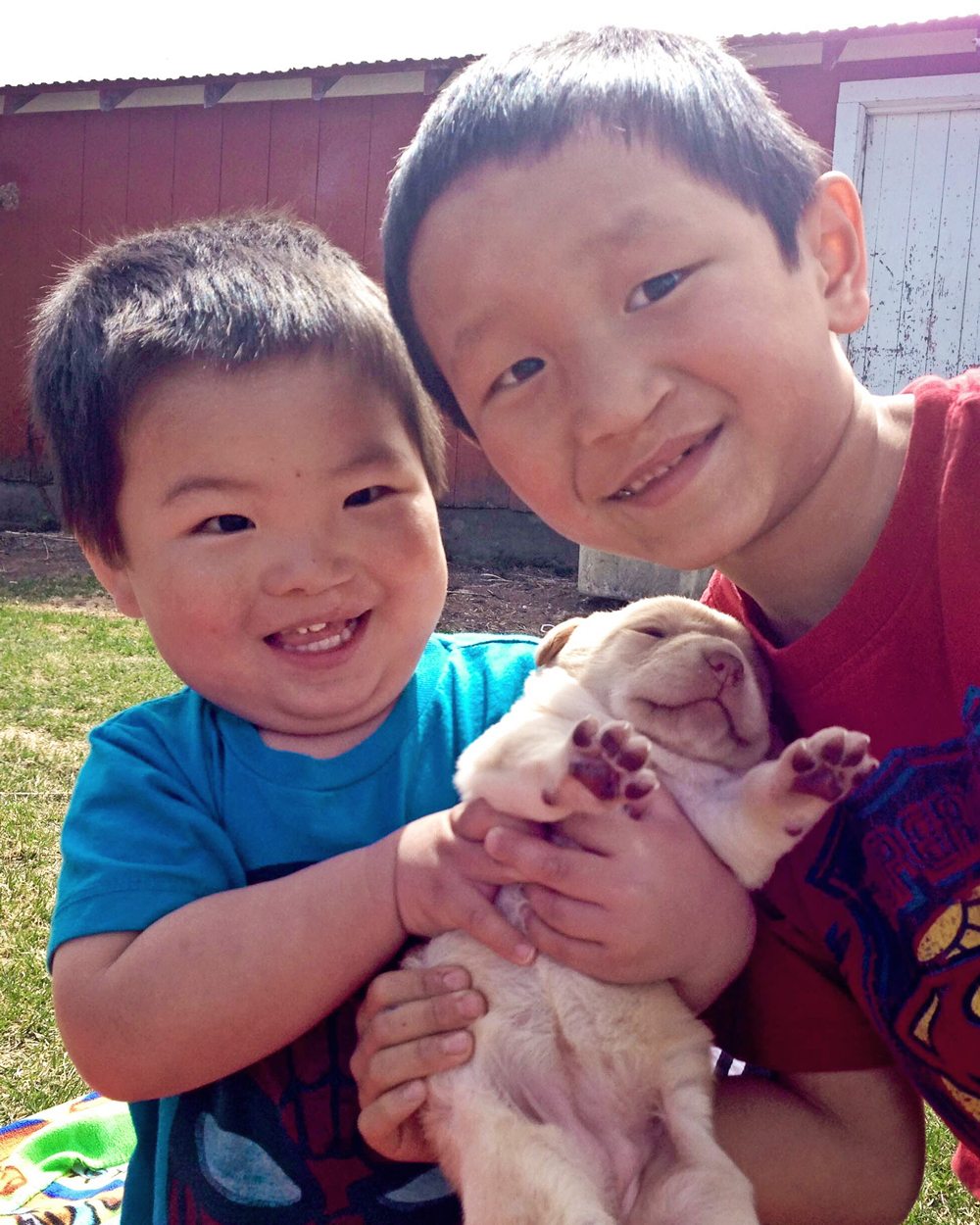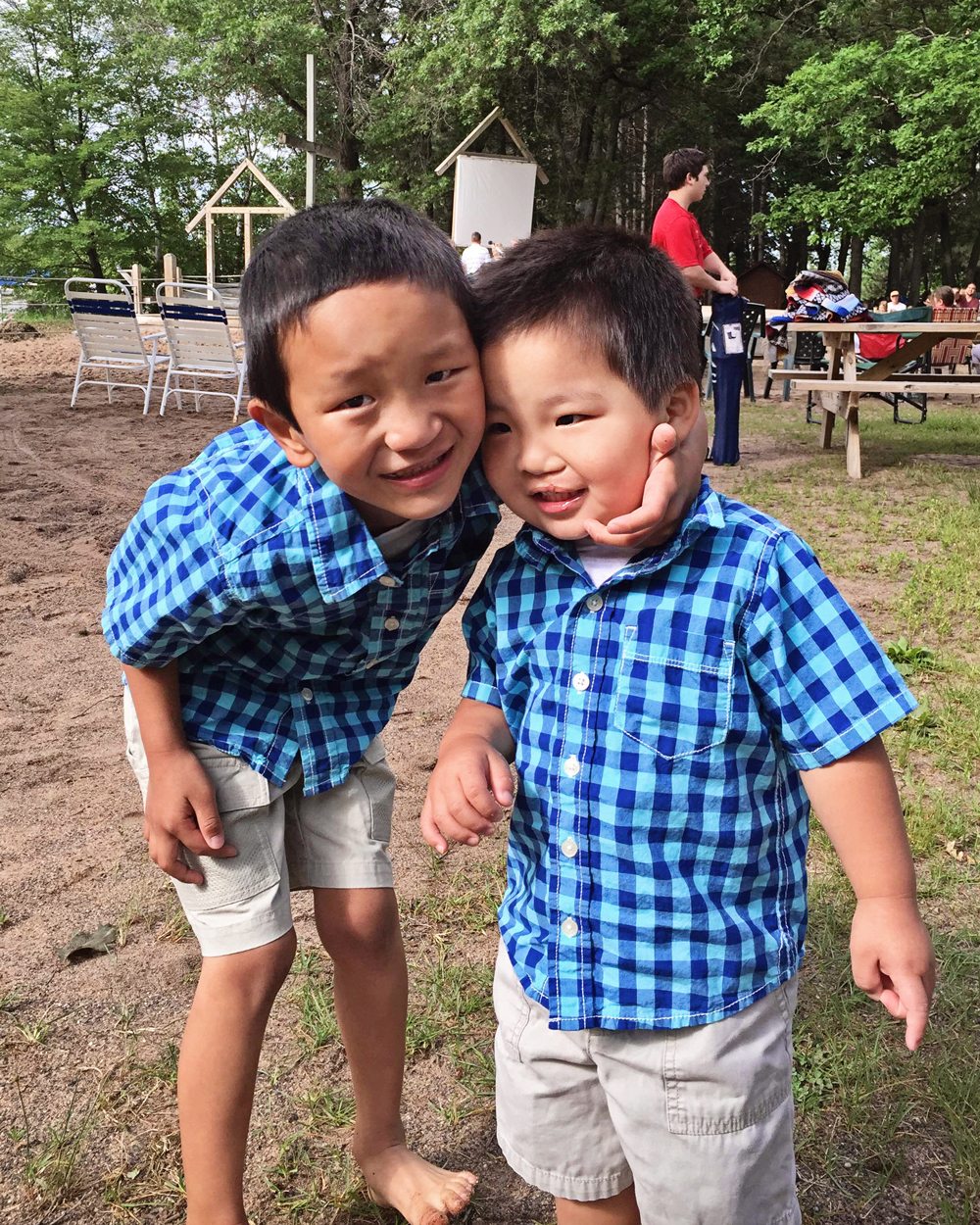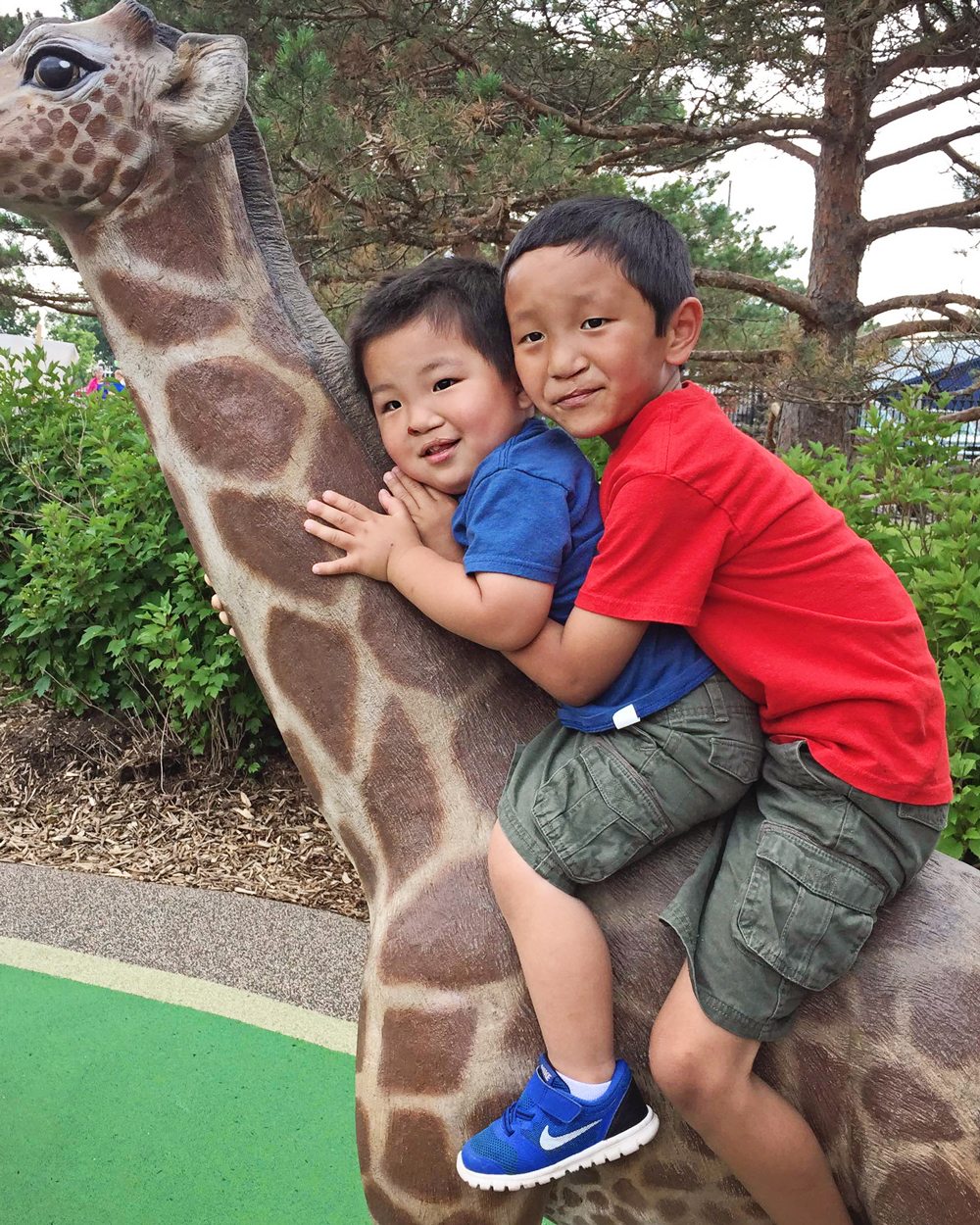“You must really like cleft,” my mother said to me after we accepted the referral of our second son with cleft.
Like cleft? No one likes cleft. Cleft is a birth defect that causes facial deformation, creates the need for painful surgeries and can wreak havoc on eating, sleeping and breathing. No one likes cleft. But because of cleft I have my two beautiful sons. That’s a hard concept to reconcile.
A birth defect caused a tragedy and loss which led to the creation of my family. Never in a million years would I have imagined this would be the story of my life.
My two sons were adopted from China. Brady, 6, was adopted in 2012 at the age of three. Paul, 2, was adopted in 2014 at the age of two. One born in and one adopted in the Year of the Dragon, a very auspicious start for Chinese kids. But because they were born in a land that views facial birth defects as a potential curse, and in which the type of healthcare we take for granted is out of reach for most citizens, they were abandoned, one at birth and one a month after birth. In the story I’ve constructed in my mind, their birth parents loved them very much and hoped they would receive the care they needed as they were both found in well-traveled places, but I’ll likely never know the real story. I guess that’s my kids’ story to discover and to tell.
Our journey to one and then two children with cleft was certainly not linear. It began in 2011 when, after being together for 18 years, my husband and I started to wonder if there was more to life than just the comfortable existence we had created. We had always loved kids and enjoyed being the favorite aunt and uncle, but had never desired kids of our own. As life went on, we softened to the idea of having kids, but not really to the idea of having infants. Though we knew that’s how kids generally come, neither one of us was overly interested in that infant stage.
Then one day my husband suggested that we could adopt; adopt an older child – a waiting child. That just felt right. So we met with some agencies and gathered reams of information. Countries were closing their doors to international adoption right and left and the US foster care system seemed so broken. We finally settled on Columbia because our agency did a very nice sales job on their partnerships there. We left the agency not realizing that Columbian adoptions were coming to a standstill at the time.
Back to the drawing board and more research on our own, and we found China. China seemed like a great fit, but there was one catch – their traditional adoption program had slowed to a virtual standstill. The only adoptions moving on a realistic timeframe (we were both 38 at the time) were waiting child adoptions, usually where a child had an identified medical need. After much consideration, we felt this was the program for us – as long as that medical need was minor.
Our agency showed us some files of children with very minor needs early in the process and assured we would be matched immediately with a similar child. Six months later we had our dossier complete and logged into the system, but it seemed there were no children on the list who matched our initial ideas (our agency did not have any partnerships and we did not even realize that was important at the time). We had assumed we’d be matched with a little girl, but now we’re told that most likely we’d be matched with a boy. And most likely that boy would be older than we had anticipated, and that boy would have more significant needs that we had anticipated.
We opened our medical checklist to more needs in the hope of being matched in the coming months. New to this process and thinking “worst case scenario” we struggled with what medical conditions we thought we could handle. Cleft was not on that list at first – surgeries, speech therapy, facial scars… it was a lot to think about. And the idea of bringing home a baby with an open lip was a bit daunting on many levels.
Finally, hearing that many children being matched had cleft, we added it to our list. We got cold feet and intended to call our agency and take cleft back off our list when we got “the call” about a beautiful two and a half year old boy with a repaired cleft lip and palate. The picture sent by email was a beautiful, stoic looking little boy, with a barely perceptible scar on his lip. We had 48 hours to decide whether to accept his referral. My husband was all-in immediately, but I was unsure. Could we parent a child with cleft? Could we parent a three year old? My husband gave me the answers in one quick statement, “He is going to have this cleft regardless, what’s up to us is whether he does it with us at his side.”
Two years later we were ready to adopt again and though we were open to many more medical conditions this time, we still had reservations about cleft. Brady’s cleft had been easy to manage so far, but would it always be? Were we up for it again? Again, we had just decided to take it off our checklist when the referral came in. This time it was an eighteen month old little boy with what we thought was a unilateral unrepaired cleft lip and palate, along with three other impairments.
This time I fell in love immediately, and it was my husband who had reservations. But an angel in the form of an American volunteer from his foster home swooped in and put our minds at ease about these other “impairments” and the sort of care he received, and though we were not sure how we felt about cleft, suddenly we were in it again. We reasoned that we already knew cleft and were connected with specialists, so it made for a good fit.
Both of my sons had their two initial cleft surgeries completed while still in China. Brady’s lip and palate were repaired at six and twelve months respectively, at a hospital in a mid-sized city (by China standards). As far as we know, both his surgeries were paid for by the Chinese government through the Tomorrow Plan. Paul’s lip and palate were also repaired at six and twelve months, but at a state-of-the-art children’s hospital in Shanghai. Paul’s surgeries were paid for by private donations through the Shanghai Healing Home, where he was placed by his orphanage. Both boys’ repairs were very well done, and surgeons here have been impressed the results.
What we’ve learned in the time since then is that all clefts are different, all doctors are different and all kids are different. Our first experience with a cleft team was a disaster. The team was huge and after individual appointments in the morning, they all poured into a small exam room, separating my husband and me, and neglecting to introduce themselves, began talking all at once. We left confused, concerned, and without a plan.
After that, we went rogue for several years, seeing a great ENT with cleft experience for ear tubes for both boys (which fixed that “hearing impairment” that showed up on Paul’s file). We then found an orthodontist whom we love, who happens to be one of the foremost orthodontists for cleft in the midwest. She started orthodontia with Brady just before his fifth birthday to pull out his upper jaw, remedying his underbite. Our orthodontist then led us to a great team at a different children’s hospital in the area. This team has individual appointments and a low-key atmosphere. They take the time to answer our questions and lay out a plan.
It’s interesting how teams can be so different, both in make up and in opinion. The previous team immediately said that Brady needed a lip and nose revision and laser treatments to minimize redness. Our current surgeon thinks his lip and nose look pretty good and recommends we leave them alone as further surgeries lead to further scarring. Orthodontia has made a huge difference in Brady’s nose over the past year as well. One surgeon we saw uses cadaver bone for the upcoming bone graft, the our current surgeon does not like the results of studies with cadaver bone and prefers to use bone from the child’s hip.
Our boys – with similar unilateral left complete clefts – are different as well. One boy has an asymmetrical face and head, with an underdeveloped upper jaw. The other has a beautifully round head with symmetrical features, an almost undetectable lip scar, but an almost completely collapsed left nostril. Neither boy stands out as having a cleft from more than a few feet away. Both are absolutely adorable.
Brady ended up needing speech surgery after his orthodontia, not for speech sounds, but for voice. Once his upper jaw was pulled forward with his orthodontic face mask, his palate no longer made contact with the back of his throat, allowing air to escape while talking, resulting in needing a pharyngeal flap surgery as well. They warned us that though the surgery is short, recovery is hard, and they were right about that one. Brady fought eating and drinking after the surgery and ended up losing ten percent of his body weight (and he didn’t have ten percent extra). After the first few weeks, however, he perked up and is able to deal with the flap in his throat like a champ.
All in all, our cleft journey has been an easy one so far. One boy needed ear tubes and a few months of speech therapy, the other needed tubes, orthodontia and speech surgery. Day to day, our children’s clefts are a non-issue. They require no treatment or management on a daily basis other than wearing headgear at night, and wiping noses frequently when the children are little as food comes out their nose through the hole in their gum line (this gets better as they get older and learn to hold the food further back in their mouth).
The surgeries are, however, a big deal and there are several more to come. We are not sure yet if Paul will need a speech surgery. Then there’s the bone graft into their jaw, and likely some sort of lip or nose revision in the future when they stop growing. Certainly not frequent surgeries, but big, unpleasant ones.
There’s also quite a bit more orthodontia in our future – luckily our medical insurance company has been great about covering it thus far. And we were also lucky to have speech therapists knowledgeable about cleft in our area. Many school therapists and even private therapists have very little training or practice with children with cleft.
So while I still view cleft as a more moderate special need, it has been very manageable for us. Our boys are normal boys who do not think anything of their clefts yet. I’m sure there will come a day when they are teased or worse because of their scars, but our boys are loved fiercely and know that they are special and that they were chosen. And they know what their mama didn’t know back then – that a scar does not define you, and that every one of us out there has a “special need.”
– guest post by Katie
……..
At NHBO, we love Family Stories. And we know our readers love them, too. Beyond being encouraging and informative, Family Stories shared here have actually resulted in children coming home to a forever family. If you’ve adopted a child through China’s special needs program, we hope you’ll consider sharing your family story. It just may be the reason another family considers that very special need.





























Leave a Reply